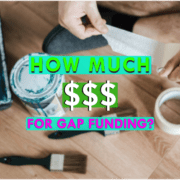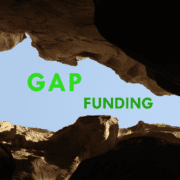How to Calculate Gap Funding
When your loan doesn’t cover 100% of your project, how do you calculate gap funding?
How much do you need for gap funding? It depends on each project.
Calculating Gap Funding Needed for a Project
The way to figure out the gaps in your project is simple:
(Cost of Property + Rehab Costs) – Hard Money Loan Amount = Gap Funding Amount Needed
If the property costs $200,000, but your lender gives $140,000, there’s a $60,000 gap you’ll need to cover. You can:
- Pay the $60,000 out-of-pocket
Or
- Bring in a gap lender, enabling you to buy the property with 100% financing. You would likely use part of this loan for the down payment and part for construction costs.
How to Calculate Construction Costs
Most hard money lenders use the ARV (anticipated retail value) rather than LTV (loan in relation to the current sale value).
In case your loan is for LTV only and doesn’t take into account construction costs, here’s how you would calculate those costs for an undermarket home:
ARV – Actual Cost of Property = Maximum Construction Budget
It’s important for you to work these numbers and know your budget up-front. Keep in mind, it’s always better to err on the generous side with your numbers. You want to be sure you can get done on-time and within the budget allotted by your hard money and gap lenders.
How much you’ll spend on construction is important when you calculate gap funding.
Read the full article here.
Watch the video here:



